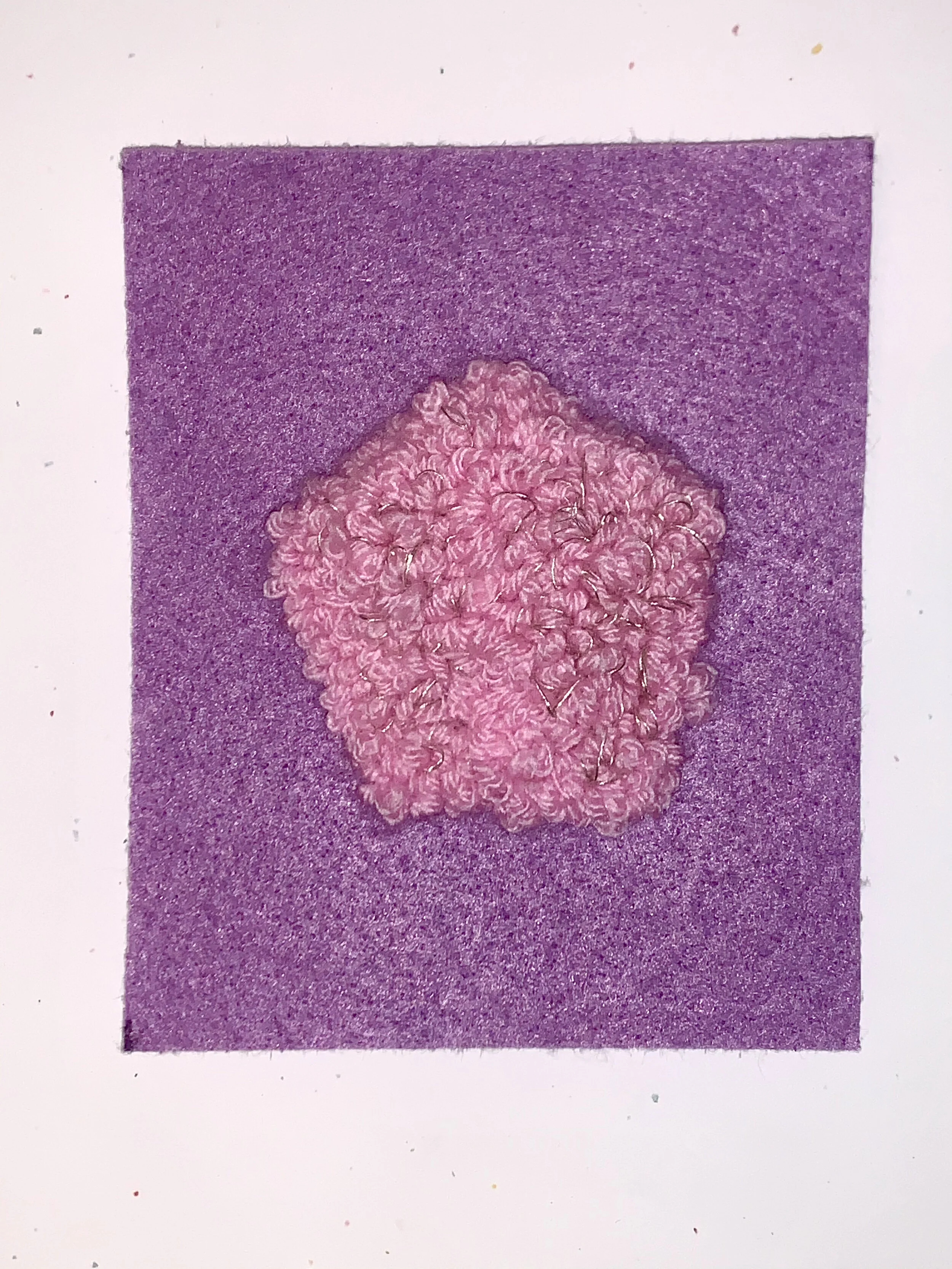Gereh by Grace Barar
Gereh, meaning knot, is a decorative pattern used in isalmic art and architecture. The patterns are made from precisely drawn shapes and can appear to go on infinitely. Gereh tiles were popularized in the 15th century, they consisted of five distinct tile shapes that could be laid together to form mathematically perfect patterns.
Because this swatch project required us to make multiple copies of our swatches I plan to make a gereh pattern of 11 tiles using two of the five gereh shapes. My pattern consists of 10 conductive gereh shapes centered around a single non conductive ‘tile’ which holds them all together.
Each ‘tile’ is made from tufted conductive thread and yarn layered with piezoresistive fabric. The conductive thread tufting is mixed with yarn tufting on the outer sides of each tile, while the inside of the tile consists of purely non-conductive tufted yarn, the piezoresistive fabric lays underneath and is covered with a felt backing. At the top of each tile are two tabs wound with conductive thread. If the tile is being played individually these tabs serve as the output. These tabs can also serve to connect the gereh tiles to each other by touching the tabs of the surrounding gereh together. Each ‘tile’ is a pressure sensor that reacts to different kinds of touch due to its tufted construction. I used an arduino uno and an external speaker to map values from the gereh to tones between 120 and 1500Hz. Using this setup the gereh becomes an instrument, one that can be played individually as well as connected to the 10 others.
Materials: Cotton yarn, Conductive thread, Punch needle, Arduino uno, Small speaker, Felt, Cotton fabric






